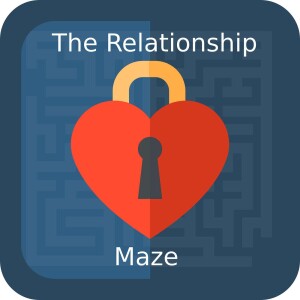
What happens when you 'lose your mind'? - How understanding the structure of your brain helps in conflict situations
 2021-11-29
2021-11-29
Send us a text
Understanding the structure of your brain helps you and your partner to understand what happens when you are in a state of high emotional expression, e.g. when angry or feeling under attack. We briefly discuss the three main regions of the brain: the brainstem, the limbic area and the cortex by using Daniel Siegel's highly visual hand model of the brain. When we feel threatened we react - that's the way our brain works. Being reactive and mobilising for fight, flight or freeze responses means we are in survival mode. In this mode we are reactive rather than receptive to our partner. In order to be open to others we need to be able to employ the thinking part of our brain, the cortex which enables us to reflect, think and connect with others. We discuss how to be able to switch from a highly reactive survival response to having the capacity again for social engagement: listening, understanding why we responded the way we did and being able to generate understanding for the other person.
Our brain had three main areas: the brainstem, the limbic area and the cortex (sometimes also called neocortex). In order of visualise these three areas Daniel Siegel suggested using our hand as a model. Put your thumb in the middle of your palm and close your four fingers over your thumb. The front of your knuckles would represent the front of your face; the wrist represents your spinal cord. Lift your fingers and move your thumb away from the palm of your hand you can see your inner brainstem. When you put your thumb back and curl your fingers over it, it means that your cortex is in place and working.
Most of the time when you are arguing with your partner you do so because you want to be connected, to be really understood and listened to. In order to be able to talk to each other effectively, i.e. to listen to the other and to be listened to, both partners need to be in a receptive rather than a reactive state.
The bit about the human brain
When our nervous system goes into a reactive mode our fight/flight/freeze responses get activated which make it neurologically impossible for us to be able to positively connect with another person. The parts of the brain that get activated in this state are older in evolutionary terms, the brain stem and limbic system. The old brain is hardwired for automatic reactions that don’t require thinking therefore allowing us to react very quickly when we perceive to be in danger. The sensory data from our brain gets the body into motion; it requires us to run, to fight back or to play dead depending on what seems to be the best strategy for survival at the time. We share this part of our anatomy, the “reptilian brain” (brain
Contact us for information about individual counselling/psychotherapy, couples therapy, clinical supervision or CPD training.
Tom's website
Angela's website
Struggling with a lot of conflict and arguments in your relationship? Learn about communicating effectively and addressing common relationship problems in our Stop Arguing, Start Loving mini course.
Learn everything you always wanted to know about building and maintaining loving relationships in our comprehensive course The Relationship Maze, starting with understanding yourself in relationships to understanding your partner and understanding what makes for a successful relationship. We look at common causes of relationship problems and offer solutions. Learn how to address relationship problems and questions without breaking up.
More Episodes
 2021-11-08
2021-11-08
 2021-11-01
2021-11-01
 2021-08-30
2021-08-30
Create your
podcast in
minutes
- Full-featured podcast site
- Unlimited storage and bandwidth
- Comprehensive podcast stats
- Distribute to Apple Podcasts, Spotify, and more
- Make money with your podcast
It is Free
- Privacy Policy
- Cookie Policy
- Terms of Use
- Consent Preferences
- Copyright © 2015-2024 Podbean.com





